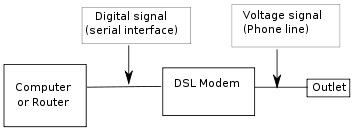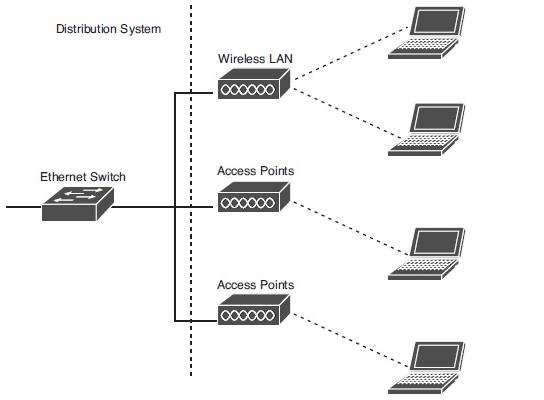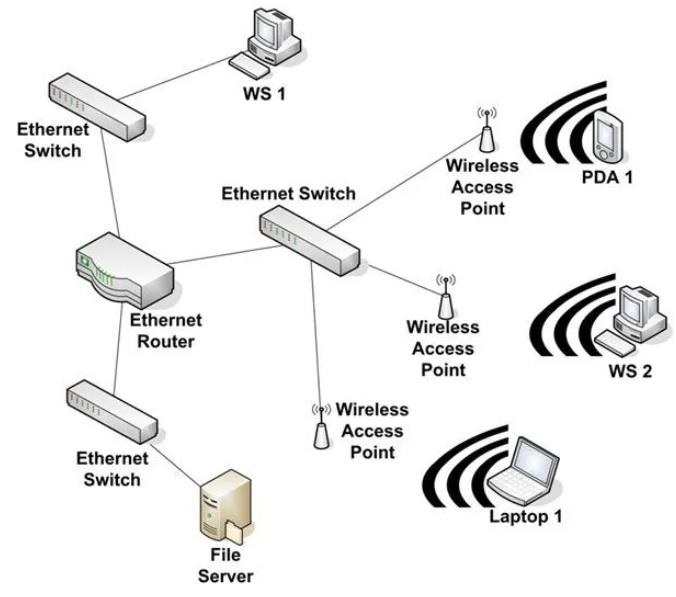
 Data Structure
Data Structure Networking
Networking RDBMS
RDBMS Operating System
Operating System Java
Java MS Excel
MS Excel iOS
iOS HTML
HTML CSS
CSS Android
Android Python
Python C Programming
C Programming C++
C++ C#
C# MongoDB
MongoDB MySQL
MySQL Javascript
Javascript PHP
PHP
- Selected Reading
- UPSC IAS Exams Notes
- Developer's Best Practices
- Questions and Answers
- Effective Resume Writing
- HR Interview Questions
- Computer Glossary
- Who is Who
What are the different access technologies in computer networks?
Access Network is a type of network which connects the end system to the immediate router, physically in the path from the end system to any other distant end system. In telecommunications it is the network connecting subscribers to ISP.
Some of the examples of the Access Networks are as follows −
Home network
Mobile network
Asymmetric Digital Subscriber Line (ADSL)
Internet service provider (ISP)
Some of access technologies are as follows −
- Ethernet
- The telephone line
- Wifi
- Cable internet access
- Fiber to the home (FTTH)
- Dial-up modem
- Digital subscriber line
- Wide Area wireless Access network
Now let us try to understand some of the technologies in detail −
Digital subscriber line
Digital subscriber line was previously known as the digital subscriber loop. This is a technology used in the transmission of digital data over telephone lines. The bit rate range in digital subscriber lines varies from 32 Kilobytes per second to 12.5 Megabytes per second.
This is useful if achieving both telephone and internet access is required. In the digital subscriber line there is no requirement for additional wire or cable and it is cost effective.
The pictorial representation of DSL is given below −

Fibre to the home
It can be defined as a technology in which optical fibre media is used to provide internet access to residential and commercial places from a central point.
Using this technology a high speed of 100 Megabits per second is achievable. It is essential when implemented in a small geographical area as implementing it in a large area is costly.
The pictorial representation of FTTH technology is as follows −

Ethernet
Ethernet can be defined as a connecting media used in networks in order to enable communication between devices. This is mainly used in Local Area Network or LAN.
The main characteristics of Ethernet are as follows −
It uses bus topology.
It uses CSMA/CD as an access control mechanism.
In Ethernet, collisions are possible.
There is no acknowledgement.
The possible data rates are 10 Mbps, 100 Mbps and 1 Gbps.
It uses Manchester encoding.
The pictorial representation of Ethernet Technology is given below −

Wireless LAN
In a wireless LAN, wireless users transmit/receive packets to/from a base station (wireless access point) within a radius of a few tens of meters. The base station is typically connected to the wired Internet and thus serves to connect wireless users to the wired network.
This is formally called Wi-Fi. The current wLANs are used 10 Mbps data within 300feet.these are related end user only, that means related to a particular college campus or government sector. It is owned by themselves.
The pictorial representation of Wireless LAN technology is given below −

Wide-area wireless access network
This is used in cellular phones. In these systems, packets are transmitted over the same wireless infrastructure with the base station. These are being managed by a telecommunications provider.
This provides wireless access to users within a radius of tens of kilometres of the base station. This Technology is also known as 3G means third generation cellular phones, in this data integrated over cellular phones.
The pictorial representation of wide area wireless access network is as follows −


